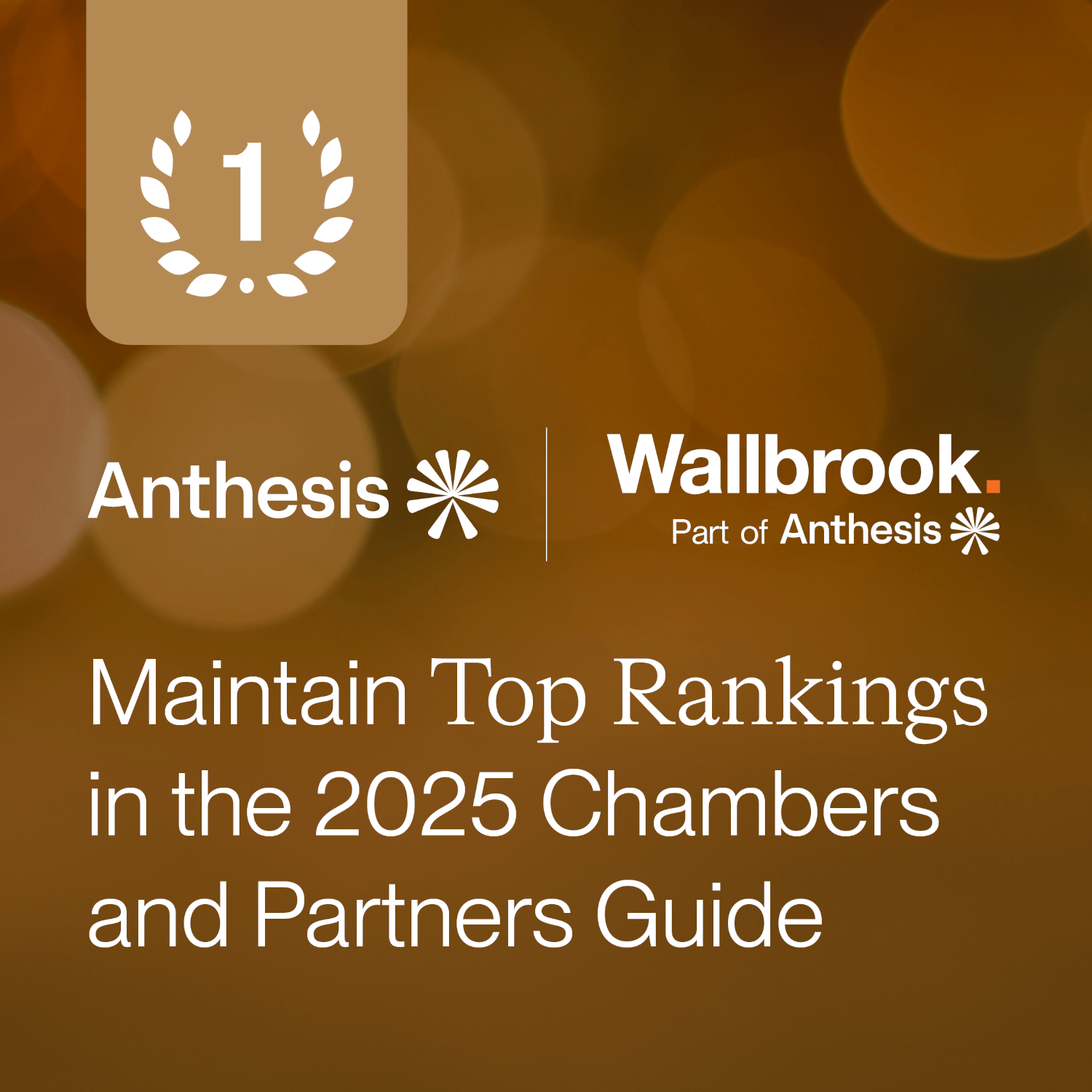
What's changing?
Share this article
As we cross the midpoint of 2025, it is clear to all that some of the ground upon which ESG and sustainability have been built in recent years has shifted as businesses, investors and advisers seek to navigate political and regulatory uncertainty in Europe and North America.
It feels as though sustainability is at a crossroads. The momentum of recent years, when sustainability appeared to have gone mainstream, has given way to regulatory dilution and rollbacks, growing political uncertainty in Europe and North America, cautious use of language, and shifting economic outlooks. Together, these factors are leaving businesses increasingly hesitant and paralysed in their investment decisions.
However, it is not all doom and gloom, and on closer analysis, the apparent crises are perhaps more nuanced, with geographical differences, a focus on action rather than disclosure and talk, more relatable language, and increased emphasis and maturity around the value derived from sustainability. ESG is adapting and evolving to respond tactically to current challenges, but it is not going away, and strategically, the direction of travel appears to remain unchanged.
As we look ahead to the second half of 2025, Matt Smith, Anthesis Technical Director for Transactions & Sustainable Finance, explores several key trends from the first half of 2025 that are informing and shaping how private equity is approaching ESG and sustainability.
What’s changing?
Regulatory uncertainty
At the beginning of the year, the general consensus was that the momentum around ESG disclosures continued to build and heighten. In Europe, this momentum has been tempered by the impact of February’s Omnibus Simplification Package, which affected sustainable reporting and due diligence requirements. Meanwhile, EU discussions are ongoing for a second Omnibus package, referred to as the Content Directive. Partly a response to recent political shifts that have deepened the divide between ESG sceptics and supporters across the United States and Europe, the initiative aims to streamline EU regulations, reduce administrative burdens, and strengthen the global competitiveness of EU companies.
For some companies, this has clearly brought relief and breathing space, while for others, including many GPs, it has been a disappointing roll-back, undermining effort and momentum, particularly around improving the quality of ESG data and basis for action and value creation. In other jurisdictions, however, momentum remains with Australia launching its sustainable finance taxonomy in June, and there continues to be increasing focus on transition finance globally, particularly within Asia. Perhaps reflecting this complex situation, the UK continues to develop its Sustainability Reporting Standards (SRS), launching its consultation in June, while announcing in July that it has dropped plans to implement a UK Green Taxonomy.
Taken as a whole, the trend over the past six months reflects a sustained focus on sustainable finance, but increasingly within the framework of efforts to simplify and streamline financial regulation, while also prioritising growth and competitiveness. Certainly, companies will need to closely monitor the evolving situation, not only in relation to future regulations such as CSRD or CSDDD, but also proposed future changes to existing sustainable finance regulations, such as SFDR.
Greenhushing
Communication has always been a key component of sustainability, being necessary to create change and engage with the myriad of stakeholders to raise awareness, as well as being a key lever for driving financial outcomes and brand differentiation. However, with increasing scrutiny of statements and actions from all sides, particularly in relation to ESG, the trend of ‘greenhushing’, holding back on credible sustainability claims for fear of backlash, appears to have gained further momentum so far this year, despite most companies still pursuing important initiatives. While this is, on the one hand, an understandable risk mitigation strategy, it also poses a risk in itself, as silence can come at a cost, especially for companies whose value creation is closely tied to ESG and sustainability action.
To investigate this, in our latest report, The Cost of Silence, Anthesis explores whether communicating ESG efforts delivers real financial and reputational return. After analysing 500+ companies across 16 industries, the answer is overwhelming clear:
- Strong environmental performance links to stronger financial performance.
- 15 out of 16 industries saw reputation boosted by sustainability perception.
- Brands that communicate sustainability take clear leadership positions.
Access the Cost of Silence report to find out more.
Using these findings, companies can prove the value of their sustainability strategies, build a competitive edge, and make a stronger internal case for investment. However, it is acknowledged that companies will need to manage any perceived pressure to change in a nuanced way and develop a tailored strategy for their specific circumstances.
Language
Closely linked to communication is language and during the first half of the year, the use of language around ESG has come under increasing focus. The term ‘ESG’ has been an obvious source of contention, with some companies and investors rebranding their ESG efforts under less emotive terms such as ‘sustainability’ or ‘responsibility’ or ‘resilience’.
We have also observed attempts to make language more relatable. As a sector and profession steeped in jargon and an ever-growing list of acronyms, we must recognise that our message, and the rationale for action, can sometimes be lost on the audience. Adapting to make the risks and opportunities relatable is therefore crucial, as is the need to be led by action rather than language – disclosure is not decision-making; communication is not commitment.
Consistent with changes in communication and language, we have also observed tactical changes in the framing of actions, with a focus on resilience and a link to long-term operational durability and risk management. Less on pledges and labels and more on pragmatic fundamentals to address operational instability, risks and value creation. Again, language can be considered tactical, and adjusted to reflect the current landscape, while still helping to ensure leadership and progress toward necessary strategic goals continue.
What’s holding strong?
ESG in transactions
Despite some of the challenges we have observed, the focus on ESG as a driver of value creation when considering acquisitions and exits remains strong. An increasing number of PE clients are requesting vendor due diligence (VDD) as a means of demonstrating strong ESG performance. ESG VDD is also helping to communicate the link between sustainable practices and resilience to enhance financial returns, increase valuations, and enhance access to capital from ESG-focused investors, while reassuring buyers with a low-risk, future-proof investment.
As part of this healthy activity, we have also seen an increasing number of PE firms considering IPO as a potential exit route. This is bringing a focus on baselining current performance and positioning and the development of strategies and roadmaps to help investments prepare themselves for pre- and post-IPO.
A final observation regarding transactions is the growing perception of an increasing number of exit failures over the past six months, often influenced by economic and geopolitical uncertainty and ongoing disparities in market outlook. In this environment, Anthesis notes that conducting robust ESG due diligence, alongside other critical workstreams, has become more essential than ever. Our guidance would be to act on expert advice and insights, ensure you take appropriate time on due diligence, and allow yourself enough time for exit preparation to address areas of weakness.
Anthesis news: Anthesis and Wallbrook maintain top rankings in the 2025 Chambers and Partners Guide
We are proud to announce that Anthesis and Wallbrook, part of Anthesis, have once again been recognised as leading firms in the 2025 Chambers and Partners Guides, achieving top-tier rankings across multiple practice areas. The rankings are based on independent research, and most importantly, direct feedback from clients. This year, Anthesis has been named one of only three ESG providers globally to achieve a Band 1 ranking in the Environmental, Social and Governance (ESG) Risk category.

Key takeaway
Halfway through 2025, ESG and sustainability feel like they are at a crossroads. Political shifts and regulatory changes, especially in Europe and North America, have slowed momentum, but the focus hasn’t disappeared. Companies are being more cautious with how they talk about ESG, often staying quiet to avoid backlash (“greenhushing”), even as strong performance still boosts reputation and value.
Language is getting simpler, more relatable, and actions are now speaking louder than buzzwords. ESG is still playing a big role in deals and investment strategies, with more attention on due diligence and long-term resilience. The message: adapt, communicate smartly, and keep moving forward.
We are the world’s leading purpose driven, digitally enabled, science-based activator. And always welcome inquiries and partnerships to drive positive change together.




